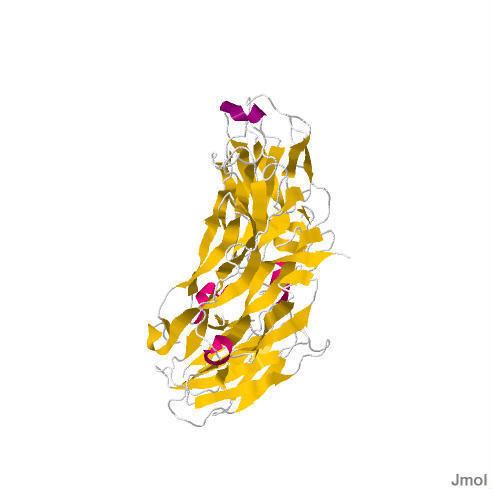Symbol IL17RA Entrez 23765 OMIM 605461 | Alt. symbols IL17R, CDw217 HUGO 5985 RefSeq NM_014339 | |
 | ||
Interleukin-17 receptor (IL-17R) is a cytokine receptor which binds interleukin 17A. Functional IL-17R is a heteromeric complex consisting of at least IL17RA and IL17RC.
Contents
- Evolution
- Structure
- Distribution
- Expression and regulation
- Clinical significance
- As therapy targets
- References
A number of additional variants exist including IL17RB, which binds preferentially IL17B and IL17E. A total of five members of the family have been identified. The first identified member, IL-17RA is located on human chromosome 22.
Evolution
There are two IL17Rs (IL17RA and IL17RD) in the genome of the basal chordate Amphioxus. After two rounds of whole genome duplications, these two IL17R genes expanded into five early vertebrate IL17R genes, IL17RA to IL17RE. Two (IL17RA and IL17RD) are found in most vertebrates, whereas the other three (IL17RB, ILR17RC and IL17RE) have undergone some losses in vertebrates during evolution.
Structure
IL-17RA is the founding member of a new IL-17R(A-E) subfamily of cytokine receptors. IL-17RA is by far the largest member of the family and has the largest cytoplasmic tail of the family. This cytoplasmic tail provides docking sites for numerous signaling intermediates. IL-17RA is composed of both alpha helices and beta sheets and has fibronectin domains, beta-sandwich domains, and ectodomains.
Distribution
IL-17 RA has been observed at high levels in certain tissues such as: haematopoietic, bone marrow, thymus, and spleen tissue. IL-17 RA is also normally found in low levels in colon, small intestine, and lung tissues.
Expression and regulation
IL-17RA is expressed in CD8+ T cells, and upregulated by IL-15 and IL-21. IL-17RA may be internalised after binding IL-17A.
IL-17RC expression is low in haematopoietic tissues and high in non-immune cells of the prostate, liver, kidney, thyroid and joints.
Clinical significance
As of 2010 IL-17A neutralizing antibodies have the potential for the treatment of autoimmune diseases in humans. It also may soon be used for protection against periodontal bone loss as it is currently being tested in mice. IL-17 RA has been observed at high levels in people undergoing treatment for cardiac fibroblasts and in certain tissues such as: haematopoietic, bone marrow, thymus, and spleen tissue.
As therapy targets
Approved anti-IL17(R) drugs include : Brodalumab (Siliq), an antibody to the receptor, approved for psoriasis. Ixekizumab, approved for plaque psoriasis, is an antibody to IL-17 itself (rather than the receptor).
